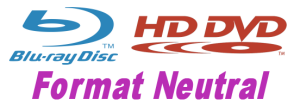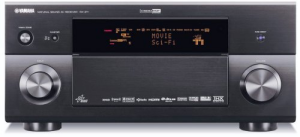The Blu-ray and HD DVD Buyer's GuideOriginal Page URL: https://www.digital-digest.com/articles/Blu-ray_HD_DVD_Buyers_Guide_page1.htmlAuthor/Publisher: DVDGuy Date Added: Dec 24, 2007 Date Updated: Dec 24, 2007 Important: On 19 February 2008, Toshiba announced that they would no longer continue with the development and production of HD DVD, thus ending HD DVD as a viable HD format. Most of this guide was written before this announcement, and as such, any references to HD DVD should be treated as legacy information and used as such. HD movies are now with us (and when I say HD or "HD Movies", I'm referring to both Blu-ray and HD DVD). Anyone who has enjoyed seeing a Blu-ray or HD DVD movie on a big screen will tell you how great the experience is. But why is it that so few people have jumped onto the HD movie bandwagon? It might be because people, some of whom have only just gotten familiar with DVDs, don't want to take on something new. Perhaps they just don't think there is any benefit to upgrading to HD, when DVDs look so good already. Or perhaps it is the format war that is causing user confusion. I like HD and I think everybody who can afford it should get onboard. This is why I have written this guide that will go through some of the questions you might have towards the two competing HD formats, and on related issues such as picking the right AV receiver to take advantage of the new HD audio formats. While this guide features a "Blu-ray vs HD DVD" section, it's original intention was to provide a comparison so people can make up their own minds in regards to which format to support. But since the format war has now ended, with Blu-ray victorious, that particular section remains for legacy reasons and nothing more. This guide is also not meant as a replacement of The High Definition DVD FAQ that I wrote previously, instead, it is a companion guide that tackles some real world issues that consumers might run into. If you haven't read my FAQ, I suggest that you keep it handy while reading this guide, as there will be information referred to in this guide that has already been covered in more detail in the FAQ. Ok, let's start. Chapter 1: Why HD?Before we get into specifics, the first question people often ask is "will HD really benefit me?" or "is HD really that much better than DVD?" Let's take a look at DVDs first. DVDs is really the first digital video format that we've all embraced, and it offers excellent pictures and sounds. However, DVD video is limited to 720x576 resolution (for PAL movies, for NTSC it is 720x480), and due to the way DVD-video handles widescreen movies, a number of these pixels are used to store the black bars for a large number of widescreen movies, thus decreasing the efficiency of the video compression techniques used. In other words, it's not the best way to store widescreen movies and with HDTV resolutions of 720p (1280x720) and 1080p (1920x1080), DVDs cannot take advantage of these higher resolutions. In many countries, even standard TV broadcasts are now ahead of DVDs in terms of resolution, and so something has to be done about home digital video to bring them up to speed. When proper HD material wasn't yet available, upscaling DVD players helped to improve the DVD picture quality on HDTVs. What these do is to take the DVD picture and using resizing techniques to bring them up to the higher resolution of HDTVs - these special techniques can be as simple as line doubling, or so complicated as to require a special computer chip to do all the calculations. So why not just keep on using DVDs with upscalers? Why bother with HD movies that cost more and require new hardware? The problem with upscaling is that in the end, it really is just a "trick" rather than real proper HD. The upscaler can only show details that were originally encoded into the 720x576 resolution video, it cannot create new details that weren't there. It does use techniques to trick you into thinking that there is a great amount of detail, such as sharpening the picture, but these are still just tricks. And it's not just the lack of details, once you upscale a DVD to a higher resolution, you will start to see in more detail the compression artifacts, noise and other effects that weren't so obvious at the standard resolution. So while DVD upscaling is a great way to extend the life of your DVD collection, for true HD content, you cannot beat Blu-ray or HD DVD movies for true HD quality. And just in case you aren't convinced, all Blu-ray and HD DVD players act as DVD upscalers, so there's more reason to upgrade if you don't already own a DVD upscaler. Another issue people have is with the price, and the cost of upgrading your other equipment as well. But unless you are a home theatre nut that want the latest equipment, you don't really need to upgrade all that much (see "Chapter 2: Prerequisites"). The cost of Blu-ray and HD DVD hardware have dropped significantly - they are now just $100 more than most well known brands of upscaling DVD players - and as mentioned before, these double as DVD upscalers and will extend the life of your DVD collection if nothing else. HD players also come with lots of freebies, up to 10 free HD movies in some cases, and these alone are worth the price of the machine itself (so basically, you get the player for free). And as for additional equipment, you don't really need to upgrade anything else - your sound system will still work fine with HD movies, since all movies carry DVD compatible audio tracks (Dolby or DTS) that will work on your existing decoder/receiver (see "Chapter 7: HD Audio" for more information). You might need to purchase a HDMI cable, but many players even come with that as well. But won't HD movie downloads be the way of the future? Who needs disc formats when you can stream movies in real-time online? HD movie downloads and streaming will be great, but unfortunately, it is out of reach of most people for the short to mid term future. The problem is Internet bandwidth, which is already quite congested - a HD movie is often 25 GB or larger, and on a regular 8 Mbit/s ADSL connection, it will take you more than 10 hours and probably half your monthly allowance to just download a single movie, and that's given that you download at the maximum theoretical speed available. For me, 25 GB represents more than 60% of my monthly allowance, and at my download speed (8 Mbit/s, but nowhere near this speed in real life), and it would take 15 hours of continuous download at my top speed (assuming I do nothing on the Internet other than download this file). And my ADSL connection costs $USD 100 per month (Australian prices, unfortunately), so that's $60 used just to download a single movie that I could have purchased for $28 at any shop. Suffice to say, Internet based HD content delivery is still some ways off. The last question people often ask is "will my TV be good enough for HD for me to see a difference?" - My opinion is that if you have a 32" or larger TV, that is HD (720p or 1080p native resolution) and comes with HDMI (most of the ones sold in the last 2 years do), then you should not hesitate in buying a HD movie player. Even if your TV does not have HDMI, you can still enjoy HD through the component output on HD movie players, and while you will be limited to 1080i resolution, it should not matter in most cases (you only need 1080p through HDMI if your TV has 1080p native resolution, and even then, 1080i input is probably good enough). I personally own a Pioneer 720p plasma that I purchase 3 years ago (so it's hardly "state of the art" stuff, although it does have 3:3 pulldown mode which I find invaluable for watching 24 FPS content found on HD movie discs - 3:3 will convert the 24 frames into 72 Hz, not as good as the 120 Hz in new TVs, but pretty damn smooth already). I can honestly say that, while I've enjoyed the TV for the 3 years and I've enjoyed using my old upscaling DVD player on it, only after I've played back a HD movie through HDMI did I find what the TV was truly capable of. It was like I had just purchased a new TV! If the above hasn't convinced you, then I recommend you visit a specialty hi-fi store (not just a department store, where the staff sometimes knows even less about HD than you do, especially after you've read this guide). They will show you the benefits of HD that you can see with your own eyes, and as they say, a picture is worth a thousand words. Chapter 2: Prerequisites - What equipment do I need before I can buy a Blu-ray or HD DVD player?As mentioned above, you don't need too much to get into Blu-ray or HD DVD. In fact, Blu-ray and HD DVD is designed to work on any TV that has component inputs, even if the TV is not high definition (and many people have found feeding their standard definition TV a HD picture does improve quality as compared to DVDs). So basically, the only requirement is component input. Everything else is optional, but it's these optional components that will give you a truly fantastic HD movie experience. Please note that DVDs cannot be upscaled over component due to copy protection licensing agreements - only DVDs that do not feature the CSS copy protection scheme (ie. your home made DVDs, and very few commercial DVDs) will allow upscaling over component. This is true of every upscaling DVD, Blu-ray or HD DVD player, including the PS3 and the Xbox 360.
Important: On 19 February 2008, Toshiba announced that they would no longer continue with the development and production of HD DVD, thus ending HD DVD as a viable HD format. This page was relevant before this announcement, but is no longer relevant now that Blu-ray is the victorious format. However, it is here for legacy purposes, as a comparison between the formats and perhaps provide some explanation as to why Blu-ray was ultimately victorious. Please feel free to skip to the next page/chapter if you wish. Chapter 3: Blu-ray vs HD DVD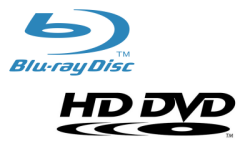
This chapter will describe some of the differences between Blu-ray and HD DVD. It is not meant as a critique of either format, the differences described are just facts - you can make your decision as to which format is "best". Bandwidth It might seem funny to start with bandwidth, but it affects audio and video quality, so it's worth a mention. Both Blu-ray and HD DVD have practically the exact same transfer speed ratings (that is, Blu-ray 1x speed is almost the same as HD DVD 1x speed). However, the Blu-ray movie specs require a throughput of 54 Mbps (of which 48 Mbps is available for audio/video, and the video bitrate peak cannot exceed 40 Mbps), whereas HD DVD only requires 32 Mbps (of which 30 Mbps is available for audio/video, and the video bitrate peak cannot exceed 30 Mbps). This means that theoretically, Blu-ray can transfer over more stuff at the same time than HD DVD with a greater video bitrate peak, which means Blu-ray can use less video and audio compress (or no compression at all for the audio). In reality, most Blu-ray and HD DVD releases use similar average video bitrates, which is usually just under 20 Mbps. And lossless audio tracks are usually around 5 to 6 Mbps (lossless audio is audio that is compressed for storage, but when uncompressed, it is exactly the same as the original uncompressed audio. Much like ZIP files for BMP images, as opposed to using "lossy" JPEG). Note that you will get diminished returns by increasing video bitrate during the encoding process - once you reach a certain bitrate, the improvement to quality is almost negligible (hence why typical encodings average less than 20 Mbps, even though much more is available for usage, especially on Blu-ray). The higher Blu-ray bandwidth was useful in Blu-ray's early stages when it relied on the less efficient MPEG-2 video compression codec. The higher bandwidth (and disc storage space) is now used mainly for Linear PCM audio tracks on Blu-ray discs. HD DVDs tend to use Dolby TrueHD to achieve the same quality audio without the need for higher bitrates. The HD DVD player then decodes the TrueHD soundtrack to Linear PCM, so the output is theoretically the same for Linear PCM soundtracks versus TrueHD soundtracks (again the "ZIP" file analogy stands, Blu-ray stores the files uncompressed, while HD DVD prefers to "ZIP" them up first). 

Video Quality There is a perception that Blu-ray offers better video quality, and this has to do with the first HD DVD player being 1080i only, while the first Blu-ray player was 1080p. For most people, the 1080i/p difference does not matter, and all HD DVD players other than the budget model has 1080p output anyway. All Blu-ray and HD DVD films are stored in the same 1080p/24 format, often using not only the same video compression codec, but having the exact same transfer as well (see Warner Bros. Blu-ray and HD DVD releases - their releases contain exactly the same video transfer, frame for frame). Both Blu-ray and HD DVD supports the exact same set of video compression codecs (H.264, VC-1 and MPEG-2). So quality wise, there is no practical difference between Blu-ray and HD DVD, and when the same transfer is used, no difference at all. Overall, both Blu-ray and HD DVD are equal in the video department. Sound Quality On a technical level, Blu-ray and HD DVD's supported audio codecs are the same, except that HD DVD requires both Dolby Digital Plus and Dolby TrueHD to be mandatorily supported by all players, while they are only an optional part of the Blu-ray specifications. Both formats have optional supports for DTS-HD. In reality, Blu-ray movies tend to prefer PCM (uncompressed) 5.1 audio, while HD DVD uses Dolby TrueHD to achieve lossless audio at lower bitrates. Listening tests have not really confirmed the advantage of using PCM over TrueHD or vice versa. In fact, the recent HD award gave the best audio category to the Transformers HD DVD that used the lossy Dolby Digital Plus format. When a format is a "mandatory" supported one, movie discs only need to provide one such mandatory track (for example, a HD DVD movie might only have one Dolby Digital Plus track). When it is optional, at least one of the tracks must use a mandatory standard (for example, a Blu-ray movie might have a Dolby Digital Plus track, but it also must have a separate Dolby Digital AC3 track to fulfil the mandatory requirements). Not that any of this makes too much difference to audio quality as it all depends on your AV amp/receiver - please refer to "Chapter 7: HD Audio" for more information. Overall, both Blu-ray and HD DVD are equal in the sound department. Region Control Blu-ray is divided into 3 regions, with the US/Canada in one region, and Europe/Australia in another region (more details on the Blu-ray region breakdown in "Chapter 4: Blu-ray Buying Tips"). Note that not all Blu-ray studios use the region system, for example, Warner Brothers' releases are all region-free. Fox is the only studio where all of its releases are region locked. HD DVD, on the other hand, is completely region-free. This means you can import your movies from anywhere around the world without having to worry about playback problems. For the sake of comparison, HD DVD should be more favoured by consumers, while Blu-ray will be more favoured by studios. Copy Protection Both Blu-ray and HD DVD use the same AACS copy encryption scheme. Blu-ray has additional support for two other DRMs called BD+ and ROM Mark. AACS also provides provisions for managed copy, which allows users to make limited copies of their discs for backup and portability issues. Managed copy if mandatory on HD DVD, meaning all discs must support it, while it started out as voluntary on Blu-ray before pressure from HP forced them to adopt it as mandatory as well. 
Interactivity Blu-ray has 3 hardware profiles (again, more on this in "Chapter 4: Blu-ray Buying Tips") - only the highest level of these profiles (2.0) has the same interactive features that HD DVD's single hardware profile supports. For example, Blu-ray profile 1.0 does not support dual video and audio decoders, which are used in picture-in-picture extra features such as those found in the 300 and Harry Potter and the Order of the Phoenix HD DVDs. Blu-ray profile 1.1 adds secondary video and audio decoder support, but is missing the Internet connectivity that most recent HD DVD releases carry. Technical Differences There are also other technical differences. Many Blu-ray movies use the BD-50, 50 GB dual layer format. While HD DVD's dual layer format is limited to 30 GB (HD-30). This means Blu-ray has more storage space than current HD DVDs. HD DVD has reacted by releasing the triple layer 51 GB HD-51 format, but it is currently unknown how compatible it will be with existing HD DVD players. As of December 2007, roughly 50% of Blu-ray movies are BD-25 (25 GB) and the rest being BD-50. Nearly 86% of all HD DVD releases are HD-30. For more statistics, please visit Blu-rayStats.com and HDDVDStats.com. Studio Supports Blu-ray is supported by more movie studios with more new releases, while HD DVD has less studio support but the HD DVD studios have more catalogue titles available through Paramount and Universal (the effect of Warner Bros. going Blu-ray exclusive, see below, might affect the status of HD DVD having more catalogue titles). Sales Blu-ray is current selling better in movies than HD DVD, by about a two to one margin (December 2007). HD DVD claims to have more standalone sales (750,000, December 2007), but Blu-ray has more hardware sales overall if you include the Sony PS3 (2.7 million, December 2007). The Sony PS3 can play Blu-ray movies out of the box, but since its main function is gaming, it is hard to calculate how many people are not using the PS3's Blu-ray capabilities at all. The table below sums up the above differences:
Summary:
Chapter 4: Blu-ray Buying Tips This chapter will present some buying tips, and some things to look out for, when buying into Blu-ray. For general information about Blu-ray, please refer to our High Definition DVD FAQ. Region Control
Profiles Blu-ray has three hardware profiles. These profiles determine what features the Blu-ray player will support. To sum up, Blu-ray Profile 1.0 is the most basic profile. Profile 1.1 (AKA "Bonus View") adds dual audio and video decoders to allow picture-in-picture type special features. Profile 2.0 adds to 1.1 by including an Ethernet port for network and Internet based interactivity, such as Internet downloads of new extra feature content. Standalones Standalones are available from quite a few different manufacturers, including (but not limited to) Panasonic, Samsung, LG, Sharp and of course, Sony. Sony's standalones are the most popular, while Panasonic is the first to introduce a Profile 1.1 compatible player. The advantages of using a standalone over the PS3 is that these are usually quieter (near silent). Standalones may also offer analog 6 channel output, and may also offer decoding and bitstreaming (see Chapter 7: HD Audio for more information on what "bitstreaming" means) of high definition audio formats such as Dolby TrueHD or DTS-HD Master Audio (whereas the older "fat" PS3 will only decode Dolby TrueHD/DTS-HD MA, and will not bitstream either of these formats - the newer "slim" PS3 can). But the disadvantages are numerous, such as the lack of ability to upgrade from Profile 1.0 to 1.1 (and from 1.1 to 2.0), and slower loading speeds due to the less power computing power of standalones as compared against the supercomputer powers of the PS3. Standalone that you might want to look at are the Pioneer BDP-LX70 and the Panasonic DMP-BD30K (as of February 2008). Game Consoles The Sony PS3 comes with Blu-ray playback out of the box, and sometimes with a free Blu-ray movie as well. As you've read above, it is my current recommended Blu-ray player due to its versatility and its potential to be upgraded to Profile 2.0 compatible. It is also an excellent Blu-ray player in it's own right, much quicker loading compared to the less powerful standalone players, and the operation is fairly quiet too. The DVD upscaler is also of excellent quality as well, although not quite comparable to high end scalers that use the Reon VX chipset. Make sure you also buy the PS3 Blu-ray remote (the official one, not one of the knock-offs that don't support all the features) - this will make your Blu-ray and DVD viewing experience much nicer compared to using the wireless controller. The remote uses Bluetooth, so it is not an universal remote, but is not affected by line of sight problems. And there's no front LCD/LED display on the PS3, so you cannot see what's being played unless you turn on the TV (but that's more of an issue for CD playback, rather than DVD/Blu-ray playback, which necessitates the TV being on). Computer Based Players You can also playback Blu-ray movies on your computer or notebook. For notebooks, look for Sony banded Vaio and Dell XPS branded notebooks that carry Blu-ray drives. Several big computer manufacturers also now allow you to add a Blu-ray (or even a Blu-ray/HD DVD dual reader drive) to computer systems. You can also build your own by buying your own Blu-ray drive. Drives from Asus/Lite-on/Pioneer/Sony are available, as well as dual format drives from LG. Free Movies
Summary:
Important: On 19 February 2008, Toshiba announced that they would no longer continue with the development and production of HD DVD, thus ending HD DVD as a viable HD format. This page was relevant before this announcement, but is no longer relevant now that Blu-ray is the victorious format. It is preserved here for legacy purposes. Please feel free to skip to the next page/chapter if you wish. Chapter 5: HD DVD Buying Tips This chapter will present some buying tips, and some things to look out for, when buying into HD DVD. For general information about HD DVD, please refer to our High Definition DVD FAQ. Region Control HD DVDs are completely region-free, so there is nothing to worry about when importing movies. However, the DVD functionality of HD DVD players is not region-free, and the Toshiba HD DVD players are region-locked without any remote tricks or secret menus to unlock them. Profiles Nothing to worry about here either, as HD DVD players only come in one flavour that supports all the extra features as found on Blu-ray Profile 2.0 players (when one becomes available, that is). Standalones Tha majority of HD DVD standalones are manufactured by Toshiba. That's not a bad thing because they produce very good quality standalones. The other manufacturers are Chinese company Venturer, as well as LG and Samsung which both produce dual format players. The budget Toshiba standalone (as of December 2007, the HD-A2 and HD-A3) only have 1080i output, although that's not an issue for people with 720p screens, or people with 1080p TVs that do proper de-interlacing. In any case, the next model up (the HD-A20 or HD-A30) does feature 1080p output and is only sometimes less than $20 more expensive. Toshiba also produces a high end player (the HD-XA2 or the European/Australian version of the same machine, the HD-XE1) for those with money to burn, featuring what is arguably the best DVD upscaler on the market (the Reon VX chipset). 
Game Consoles The Xbox 360 does not have HD DVD playback built-in. Instead, you have to buy the Xbox 360 HD DVD add-on drive - the only purpose of the drive is to play HD DVD movies (and also DVD movies, but the console's main drive already does that anyway). The add-on drive is not expensive, but the biggest problem with the Xbox 360 is that it is a bit noisy - the latest generation consoles using the Falcon chip or newer will be quieter. Those with the first generation of the console will also miss out on HDMI output support. The Xbox 360 can upscale DVDs over HDMI and VGA using the optional VGA cable. Audio decoding and output is fairly limited for the add-on drive, with only transcoding to AC3 or full-bitrate (1.5 Mbps) DTS for the HD audio formats, with no decoding to LPCM 5.1 or bitstreaming support (which is not surprising because many 360's lack HDMI output). If you already have a Xbox 360, especially one with HDMI output, then the add-on drive is a cheap way to get into HD DVD. 
Computer Based Players You can also playback HD DVD movies on your computer or notebook. For notebooks, look for Toshiba banded notebooks that carry HD DVD drives. Several big computer manufacturers also now allow you to add a HD DVD (or even a Blu-ray/HD DVD dual reader drive) to computer systems. You can also build your own by buying your own HD DVD drive. Drives from Asus/Buffalo/HP/NEC/LG are available, as well as dual format drives from LG. Free Movies
Summary:
Important: On 19 February 2008, Toshiba announced that they would no longer continue with the development and production of HD DVD, thus ending HD DVD as a viable HD format. This page was relevant before this announcement, but is no longer relevant now that Blu-ray is the victorious format. It is preserved here for legacy purposes. Please feel free to skip to the next page/chapter if you wish. Chapter 6: Format NeutralityWhat is Format Neutrality? Format Neutrality means you do not take a side during the format way and basically adopt both formats. You can either do this by buying a dual-format player, or even buying two separate players. Warner Brothers is a format neutral studio as of December 2007, meaning they release movies for both HD formats. If supporting Blu-ray is called "going blue", and supporting HD DVD is called "going red", then being format neutral is "going purple". Why is it good? Being format neutral means you get to enjoy every single HD movie release, regardless of whether this studio supports that format or not. Depending on which format you choose, you will end up not being able to play 40% to 60% of all HD movie releases simply because most studios are exclusive. Don't get sucked into the silly format war and have to choose between watching Transformers or Spider-Man 3 - you get to watch both. People often find that being format neutral is a cure for format fanboism. Why is it not so good? Becoming format neutral is more expensive than supporting a single format, especially if you go with a dual-format player. If you go with separate players, then you end up having one more device that you must connect to your TV/sound system and the associated cable mess that comes with that. How do I become format neutral? Going format neutral depends on what kind of HD player you already have. If you already have a PS3, then buying a Toshiba HD-A2/A3 is the cheapest option. If you have a PS3 and a Xbox 360 (lucky you), then getting the HD DVD add-on drive for the 360 will get you there. If you have a standalone Blu-ray player, then getting a standalone HD DVD player is the best choice. If you have a standalone HD DVD player, then getting the PS3 is the best option (see "Chapter 4: Blu-ray Buying Tips" to see why I recommend the PS3 as your Blu-ray player). And if you don't have a console (and don't want one) and don't have any HD standalones, then getting a dual format player will be the "cleanest" solution, although getting two standalones (or a HD DVD standalone plus the PS3) is the cheaper solution.
Summary:
Chapter 7: HD AudioThe two HD formats not only improves the picture quality, the sound quality has also been massively improved. Unlike the "matrixed" 7.1 sounds on DVDs, Blu-ray and HD DVD both support true 7.1 channel audio, and sometimes in either lossless or uncompressed format. Being lossless of uncompressed means standard audio compression techniques (needed to get the audio file size down to something acceptable) will no longer be needed, as this "lossy" type of compression reduces quality. Before we get to the new HD formats, let's go through the many ways which you can enjoy these HD (or high bitrate) audio formats and the requirements of each method. Raw Bitstream Transport: Also known as "pass-through" mode. This method sends the raw unprocessed digital data over HDMI 1.3 or newer connections, so the receiving device (your AV receiver/decoder) can do the decoding. HDMI 1.3 is required due to the high bitrates often used by HD audio formats. Note that eventually, there will be audio tracks that require audio mixing to be done on the player, and as such, bitstreaming may have limited usage. Ok, so let's now look at the new HD formats in detail. What are the new HD formats? Linear PCM: LPCM has existed since the days of CDs, but now with HDMI's higher bandwidth, it can now carry 5.1 or 7.1 channels of audio, as opposed to the 2 channel audio found on CDs. LPCM is uncompressed audio, so it requires a lot of storage space. Linear PCM 5.1/7.1 requires HDMI due to the increased bandwidth required that optical/SPDIF cannot handle. So with the above information, what kind of audio equipment should you need? Since all the formats supports legacy output in one form or another, you existing AC3/DTS amp/receiver will give you multi-channel audio for all of these formats, but perhaps not at the higher bitrate, resolution and channels that these HD tracks may include. So if you are wary of spending more money on your sound system, then you don't need to upgrade to achieve a more than acceptable level of Blu-ray and HD DVD audio performance. Please note that while the PS3 is recommended several times in this guide, the older "fat" variety cannot bitstream any of the high bitrate audio codecs. The new PS3 Slim models can. All can decode Dolby TrueHD to PCM, and the same for DTS-HD MA (when updated to firmware 2.30 or later). Then there is the issue of audio mixing, which basically means that player decoding support is preferred to bitstreaming and receiver decoding. An example of audio mixing is the interactive elements such as the audio in menus - bitstreaming will mean no such audio is heard, while player decoding will mix the various sound elements together before sending it all out as a single PCM stream. With increased interactivity, audio mixing will become more and more important. In other words, a player doing the decoding is a more future proof way of handling audio than bitstreaming, so keep this in mind. However, if you are in the market for a new sound system, the recommendation would be to get a system that supports at least PCM 8 channel audio input via HDMI. Note that not all HDMI receiver/amps will process the audio component of the HDMI signal - some only pass-through the HDMI video signal to your TV. If your amp/receiver can accept 8 channel PCM audio through the HDMI connection, then you will be able to enjoy a high level of audio from Blu-ray and HD DVD. But if money is no object, then you will want a HDMI receiver that supports the decoding of all of the above HD audio formats, and of course a Blu-ray and HD DVD player that supports raw bitstream output for all of these formats to feed your receiver (not all do, unfortunately - for example the Toshiba HD-A30 does not support bitstream output while the Toshiba HD-A35 does, even though both has HDMI audio output). But prices for such receivers are dropping all the time, and you can pick a TrueHD and DTS-HD MA decoding receiver like the Onkyo TX-SR605S for less than $380 from Amazon. Is there really a huge difference between letting your player decode the TrueHD/Master Audio stream and feed it to your receiver via LPCM, versus feeding the receiver the bitstream and letting the receiver decode it? Both are handled differently and so there will be audible differences, but which is "better" or "worse" is a bit subjective. Then there is also the issue of audio mixing outlined above, and so bitstreaming is of limited use.  And even if money is a bit tight: Onkyo TX-SR605S AV Receiver is still affordable and has TrueHD and DTS-HD MA decoding too
Summary:
Chapter 8: AccessoriesDue to the emergence of HDMI, which can carry both digital video and audio signals, the requirement for cables might actually be reduced from the days when you needed component cables as well as optical/SPDIF cables. If you have a HDMI capable AV receiver (with HDMI audio support), then all you need is one HDMI cable to connect your player to your receiver (and another one from your receiver to your TV, but if you have the receiver, you most likely already have this connection up and running). If you don't have a HDMI audio supporting amp/receiver, then you will still need to rely on an optical/SPDIF cable to carry the digital audio - you probably have one of these left over from your DVD player. If your receiver can accept HDMI video input, then a HDMI cable to the receiver (and one from the receiver to your TV) is required as well. Otherwise, you can just plug the HDMI cable straight to your TV. 
But what if your TV's HDMI connector(s) are already used up? Other than buying yourself a new HDMI AV receiver, there are cheaper options you can try - HDMI switches. These perform a very simple function, they basically have multiple HDMI inputs and a single HDMI output, with a remote control or a button on the device to switch between the various HDMI inputs. This way, you can easily extend your TV's HDMI input(s) without having to spend a fortune. The following are some Amazon links to these HDMI switches. Note that you might want to ensure the switch is HDMI 1.3 compatible, for future-proofing (although if you need HDMI 1.3, it means you have an HDMI AV receiver, which has built in switches):
Summary:
Chapter 9: ConclusionSo there you have it. When I started writing this guide, I didn't really think it was going to be this long. Clearly, getting into HD movies is a bit more complicated than when people first started to get into DVDs, with so many new standards and formats to learn. But hopefully after reading this guide, you will have a good idea of what to expect and what you will need in order to enjoy HD in your home. Good luck with your purchasing. |







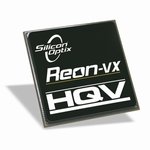 For the dual format market, both LG and Samsung have models out. You might want to skip the first generation LG model, as it does not have proper HD DVD support (lack of HDi interactivity). The second generation LG does add full HD DVD support and along with the second generation Samsung dual-format player, the BD-UP5000, both have Blu-ray profile 1.1 compatibility. The Samsung also features the excellent Reon VX HQV video processing chip for the ultimate DVD upscaler quality. The problem with dual-format players is that they are far too expensive, often more expensive than buying two separate standalones. The problem with the BD-UP5000 is numerous though (see the last few pages of
For the dual format market, both LG and Samsung have models out. You might want to skip the first generation LG model, as it does not have proper HD DVD support (lack of HDi interactivity). The second generation LG does add full HD DVD support and along with the second generation Samsung dual-format player, the BD-UP5000, both have Blu-ray profile 1.1 compatibility. The Samsung also features the excellent Reon VX HQV video processing chip for the ultimate DVD upscaler quality. The problem with dual-format players is that they are far too expensive, often more expensive than buying two separate standalones. The problem with the BD-UP5000 is numerous though (see the last few pages of 
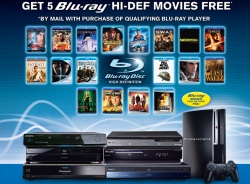 Saving the best bit till last, when you buy a Blu-ray player, you will most likely get yourself some free Blu-ray movies included. In the US and Australia, qualifying players used to get 5 free Blu-ray movies (usually out of a choice of two dozen movies). These offers expire and re-appear from time to time, so check out the links below to see if there is currently an offer available in your area. In the UK, a current offer (valid until end of March 2008) is available where if you purchase a Sony Blu-ray player, you get both the Spider-Man and Pirates of the Caribbean trilogies (so 6 movies) for free. These offers are updated all the time, and some might have expired by the time you read this. Always check with the retailers (eg. Amazon.com) as well to see if they have some special offer in addition to manufacturer offers. Links on where you can find out more below:
Saving the best bit till last, when you buy a Blu-ray player, you will most likely get yourself some free Blu-ray movies included. In the US and Australia, qualifying players used to get 5 free Blu-ray movies (usually out of a choice of two dozen movies). These offers expire and re-appear from time to time, so check out the links below to see if there is currently an offer available in your area. In the UK, a current offer (valid until end of March 2008) is available where if you purchase a Sony Blu-ray player, you get both the Spider-Man and Pirates of the Caribbean trilogies (so 6 movies) for free. These offers are updated all the time, and some might have expired by the time you read this. Always check with the retailers (eg. Amazon.com) as well to see if they have some special offer in addition to manufacturer offers. Links on where you can find out more below:
 Saving the best bit till last, when you buy a HD DVD player (including the Xbox 360 add-on drive in the US or Europe), you will most likely get yourself some free HD DVD movies included. In the US and Australia, qualifying players get up to 10 free HD DVD movies. In Europe, you can easily get 5 or 6 movies for free too. Links on where you can find out more below:
Saving the best bit till last, when you buy a HD DVD player (including the Xbox 360 add-on drive in the US or Europe), you will most likely get yourself some free HD DVD movies included. In the US and Australia, qualifying players get up to 10 free HD DVD movies. In Europe, you can easily get 5 or 6 movies for free too. Links on where you can find out more below: